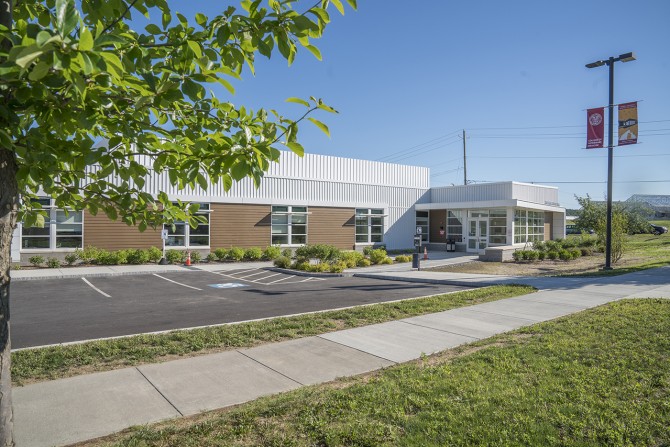Small Animal Community Practice combines technology and care
By Patricia Waldron
Buying inventory, keeping the books, managing staff – a lot goes into running an independent veterinary clinic besides treating sick animals. Now, students at the College of Veterinary Medicine (CVM) will experience these aspects firsthand at the college’s new Small Animal Community Practice (SACP).
The SACP will function much like a neighborhood small-animal practice. Fourth-year DVM students will step into the role of veterinarian to perform vaccinations and routine surgeries like mass removals and dental procedures with guidance from experienced faculty and licensed veterinary technicians.
The initial vision for the clinic came from Dr. Lorin Warnick, Ph.D. ’94, the Austin O. Hooey Dean of Veterinary Medicine. “We recognized there was a gap in the veterinary education,” said Warnick. “While our students were getting excellent training in specialty clinical skills, we also wanted to prepare them for the day-to-day challenges of running an independent general practice. This new clinic will do just that, blending entrepreneurial education with hands-on clinical training.”
The new 10,000-square-foot building on Campus Road marks the final addition under the class expansion project. Maddie’s Shelter Medicine Program at Cornell and the primary care surgery program will share the building. “The combining of these three programs together will provide synergy for future community engagement,” said Dr. Meg Thompson, associate dean of hospital operations and corporate relations and director of the Cornell University Hospital for Animals (CUHA).
The Small Animal Community Practice, which evolved from the Community Practice Service, has five exam rooms, a treatment room, separate waiting areas for dogs and cats and an area for hospitalizing the animals. The practice offers dental services, including cleaning, X-rays and surgical tooth extractions.
“We’re like your family veterinary hospital, where people bring their pets for most of the care that they need in their lives,” said Dr. Brian Collins, DVM ’94, Small Animal Community Practice section chief. “We want to offer state-of-the-art care using the newest information technology and equipment, so that we can teach the students the gold standard whenever possible, but we want to do it in a very real setting with clients from the community.”
At CUHA, students could easily consult specialists on routine cases, said Dr. Leni Kaplan, lecturer for Small Animal Community Practice. Now, she said, “they’re not always going to have a specialist just down the corridor. Students are really going to have to stand on their own two feet and decide what to do with patients.”
Even the design of the building is optimized to give students a range of experiences, with a variety of exam tables, surgery-room lighting and types of cages.
Students will gain an appreciation for the realities of running a successful clinic, such as billing and keeping track of cash flow. “Our goal is to expose them to the practice-management side, including finances and pricing, reinvesting in the business, human resources and how to communicate with staff,” Kaplan said.
The college has also implemented a new electronic medical-record system that will offer better customer service, provide visibility into practice management and make patient care more efficient for students and staff.
With the new clinic comes new software for managing patient records. SACP will roll out additional features to improve customer service, such as a check-in kiosk, a patient portal for viewing medical records, online appointment booking and confirmations through text message.
Next, the new software will be tailored for CUHA and specialty practices, and planners hope it will be in use hospitalwide by late fall.
Patricia Waldron is a freelance writer.
Media Contact
Get Cornell news delivered right to your inbox.
Subscribe

